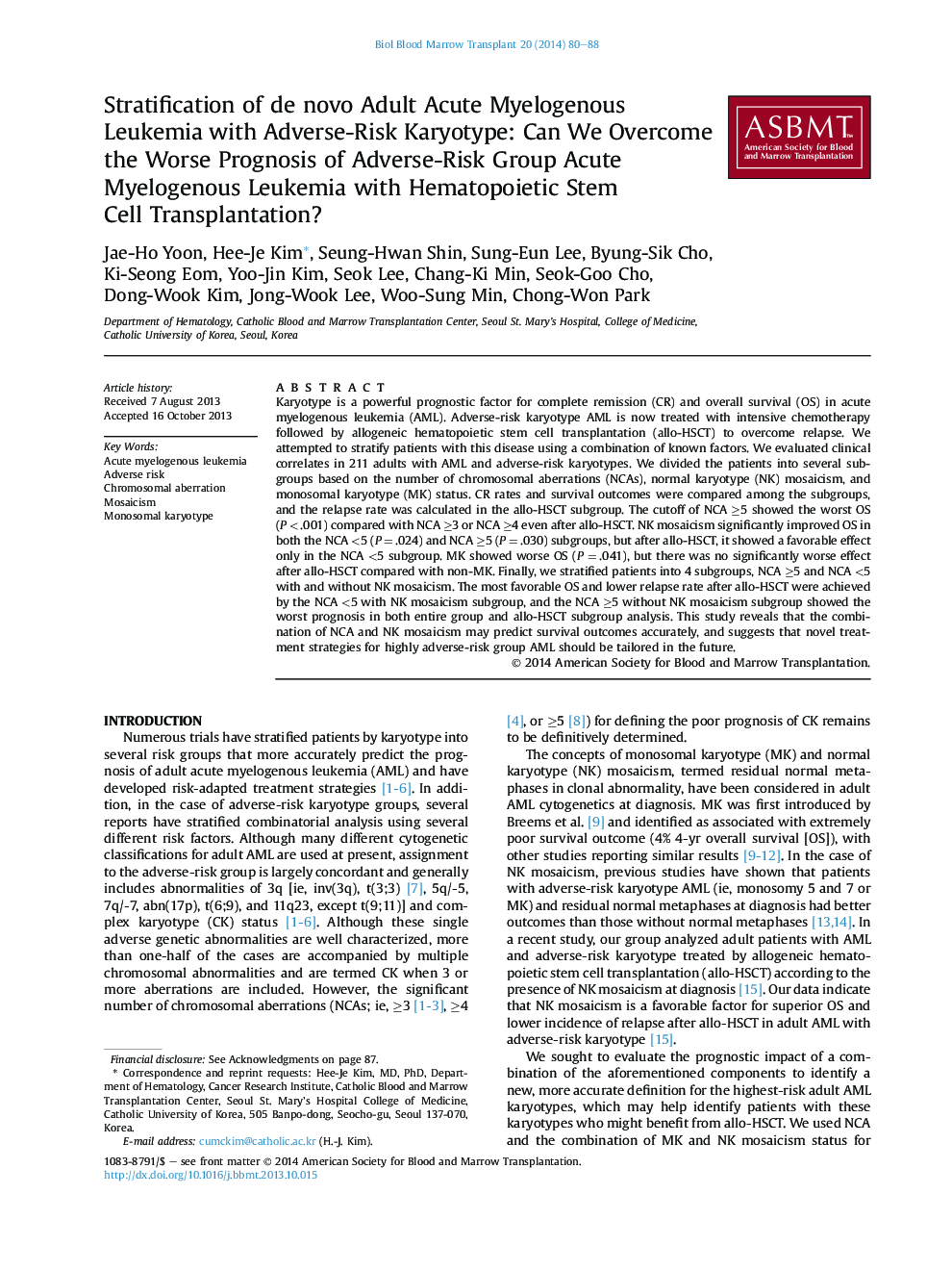| Article ID | Journal | Published Year | Pages | File Type |
|---|---|---|---|---|
| 2102373 | Biology of Blood and Marrow Transplantation | 2014 | 9 Pages |
Karyotype is a powerful prognostic factor for complete remission (CR) and overall survival (OS) in acute myelogenous leukemia (AML). Adverse-risk karyotype AML is now treated with intensive chemotherapy followed by allogeneic hematopoietic stem cell transplantation (allo-HSCT) to overcome relapse. We attempted to stratify patients with this disease using a combination of known factors. We evaluated clinical correlates in 211 adults with AML and adverse-risk karyotypes. We divided the patients into several subgroups based on the number of chromosomal aberrations (NCAs), normal karyotype (NK) mosaicism, and monosomal karyotype (MK) status. CR rates and survival outcomes were compared among the subgroups, and the relapse rate was calculated in the allo-HSCT subgroup. The cutoff of NCA ≥5 showed the worst OS (P < .001) compared with NCA ≥3 or NCA ≥4 even after allo-HSCT. NK mosaicism significantly improved OS in both the NCA <5 (P = .024) and NCA ≥5 (P = .030) subgroups, but after allo-HSCT, it showed a favorable effect only in the NCA <5 subgroup. MK showed worse OS (P = .041), but there was no significantly worse effect after allo-HSCT compared with non-MK. Finally, we stratified patients into 4 subgroups, NCA ≥5 and NCA <5 with and without NK mosaicism. The most favorable OS and lower relapse rate after allo-HSCT were achieved by the NCA <5 with NK mosaicism subgroup, and the NCA ≥5 without NK mosaicism subgroup showed the worst prognosis in both entire group and allo-HSCT subgroup analysis. This study reveals that the combination of NCA and NK mosaicism may predict survival outcomes accurately, and suggests that novel treatment strategies for highly adverse-risk group AML should be tailored in the future.
